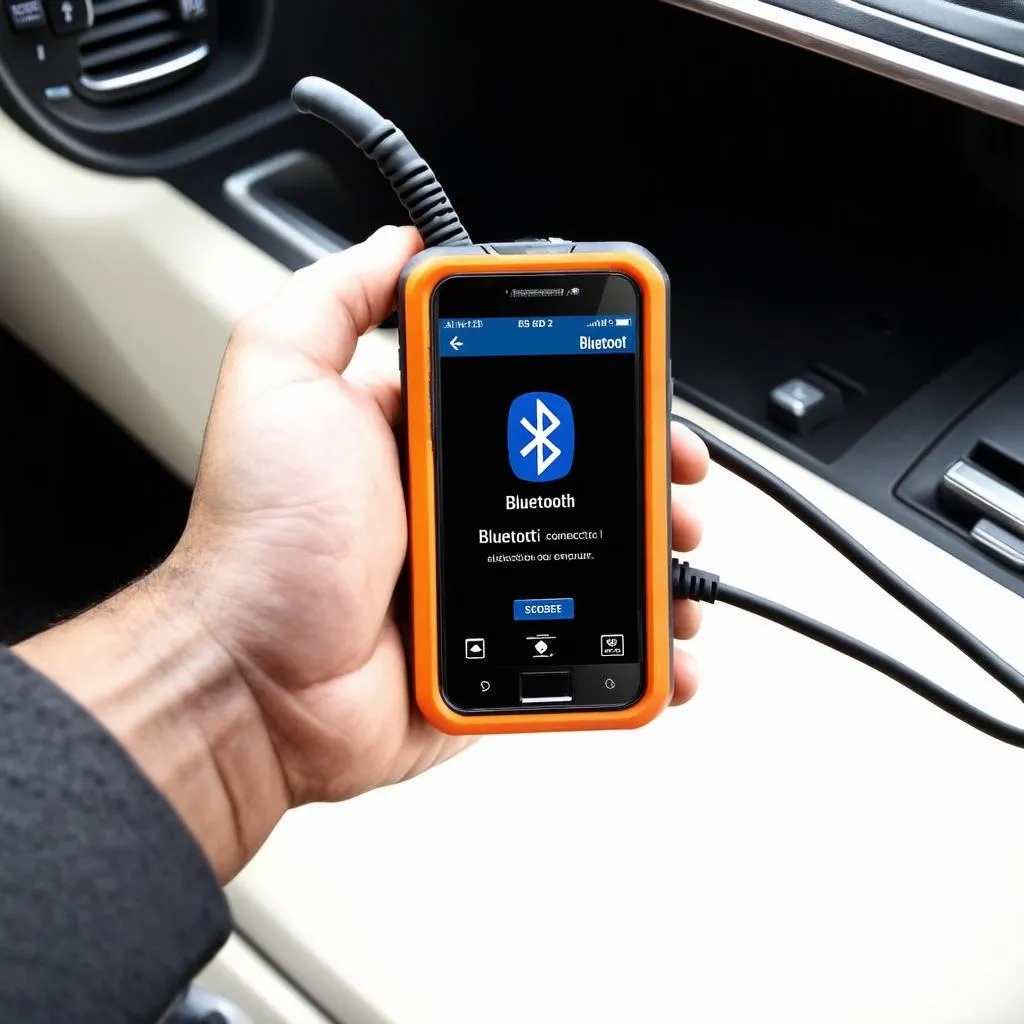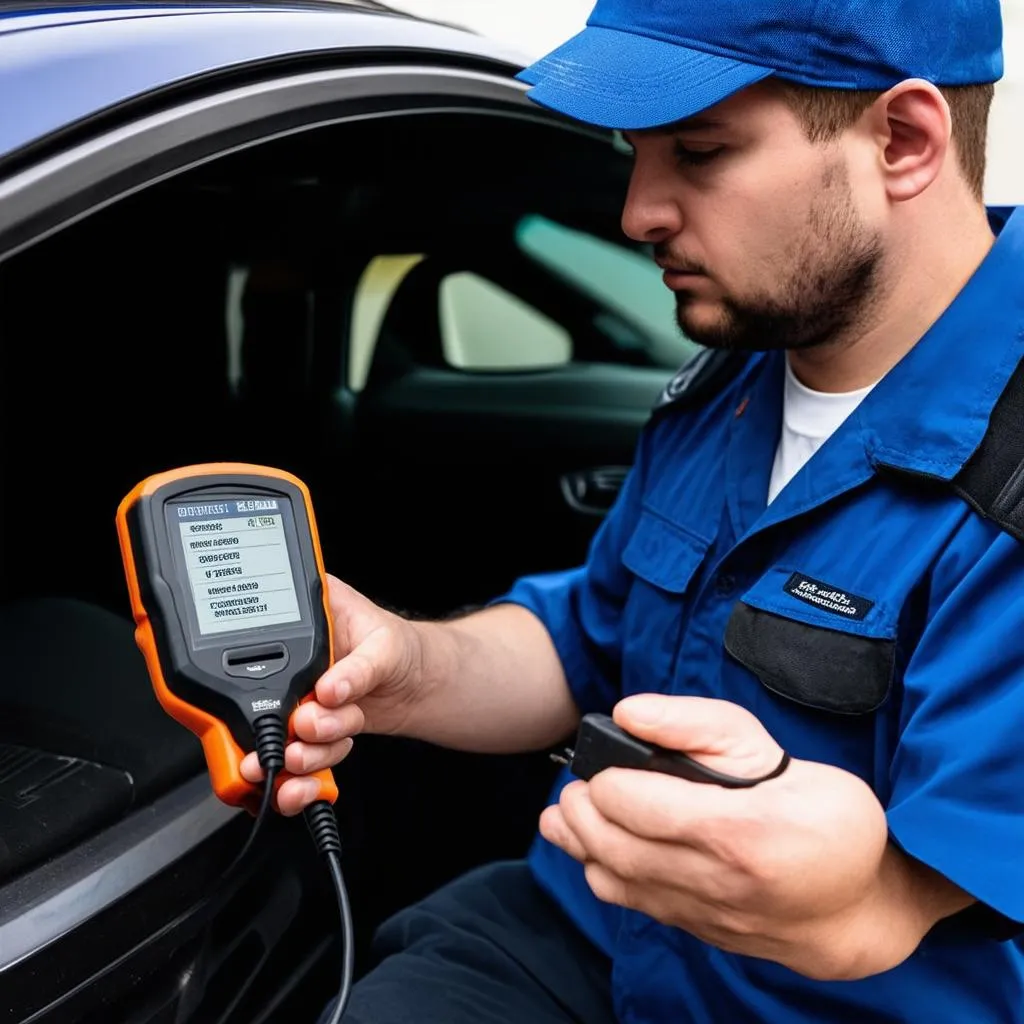Ever found yourself staring at your car’s dashboard like it’s speaking a foreign language? You’re not alone! We’ve all been there, wondering what those blinking lights mean and how to decipher the secrets hidden within our car’s computer. One of these mysteries often revolves around the elusive “Bluetooth Obd Pairing Code.”
Imagine this: you’ve just bought a shiny new OBD2 scanner that promises to unlock your car’s inner workings, but it requires a pairing code. You frantically search through your glove compartment, hoping for a magic code sheet, only to come up empty-handed. Frustrating, right?
Well, fear not, fellow car enthusiast! This article acts as your guide to understanding Bluetooth OBD pairing codes, demystifying the process, and equipping you to communicate with your car like a pro.
What Exactly is a Bluetooth Obd Pairing Code?
Let’s break it down. “Bluetooth” refers to the wireless technology enabling your smartphone or tablet to connect to the OBD2 scanner. “OBD,” or On-Board Diagnostics, is your car’s system for self-diagnosis and reporting. And “pairing code”? That’s the key that unlocks the communication between your device and your car.
In simpler terms, the Bluetooth OBD pairing code is like a secret handshake, ensuring a secure connection between your diagnostic tool and your car’s computer.
But Here’s the Twist…
Most OBD2 scanners don’t actually require a unique pairing code. They often use a default code, like “0000”, “1234,” or “6789,” pre-programmed by the manufacturer. It’s like the universal “password” for your Wi-Fi router before you personalize it.
“The majority of Bluetooth OBD2 devices on the market are designed for plug-and-play simplicity,” explains John Miller, automotive electronics engineer and author of “The Car Whisperer’s Guide to OBD.” “Default pairing codes make it easier for everyday users to access their car’s data.”
When You Might Need a Specific Pairing Code
While default codes are common, certain high-end or specialized scanners, particularly those designed for specific car brands, might use unique pairing codes. These codes often come with the device or require a quick online search using your scanner’s model number.
For instance, some European car models might need a specific pairing code due to their advanced security protocols. You can often find this information in your car’s manual, the scanner’s documentation, or by contacting the manufacturer’s support team.
Troubleshooting Bluetooth OBD Pairing Issues
Having trouble connecting? Don’t worry; it happens! Here are some common issues and how to address them:
- Incorrect Pairing Code: Always double-check the code you’re entering. If the default codes don’t work, refer to your scanner’s documentation or contact the manufacturer.
- Bluetooth Connectivity Problems: Ensure Bluetooth is enabled on your device and that it’s discoverable. Sometimes, simply toggling Bluetooth off and on again can resolve the issue.
- Compatibility Issues: Ensure your OBD2 scanner is compatible with your car’s make, model, and year. Not all scanners are universally compatible.
 Bluetooth OBD2 Scanner Connection
Bluetooth OBD2 Scanner Connection
The Power of OBD2 and Beyond: A Glimpse into the Future
Beyond simply reading and clearing those pesky “check engine” lights, OBD2 scanners have evolved into powerful tools. They can unlock a treasure trove of data, from monitoring engine performance and fuel efficiency to analyzing driving habits and even diagnosing complex mechanical issues.
Think of it this way: your car’s computer is like its mind, constantly processing information about its health and performance. The OBD2 scanner is your window into that mind, allowing you to understand its thoughts and address any concerns before they escalate.
“In today’s technologically advanced vehicles, understanding OBD2 is akin to having the ability to converse with your car,” says automotive technology expert, Dr. Emily Carter, in her recent paper on connected car technologies. “This open communication paves the way for a safer, more efficient, and enjoyable driving experience.”
Frequently Asked Questions about Bluetooth Obd Pairing Codes:
Here are some answers to questions we often receive:
Q: What if I lost my scanner’s manual and can’t find the default pairing code?
A: Don’t worry! A quick online search for your scanner’s model number will usually lead you to the manufacturer’s website, where you can download the manual or find the default pairing code.
Q: My scanner connected successfully, but I’m not seeing any data from my car. What should I do?
A: First, ensure the scanner is properly plugged into the OBD2 port (usually located under the dashboard on the driver’s side). If it’s securely connected, there might be compatibility issues. Refer to your scanner’s documentation or contact the manufacturer to confirm compatibility with your car model.
Q: Can I use any Bluetooth OBD2 scanner with my car?
A: While most scanners work with a wide range of vehicles, it’s always best to check compatibility before purchasing. Factors like car make, model, year, and regional specifications can affect compatibility.
Explore More and Take Control of Your Car’s Health
Want to delve deeper into the world of OBD2 and car diagnostics? Check out these other informative articles:
 Mechanic Using OBD2 Scanner
Mechanic Using OBD2 Scanner
Need help setting up your OBD2 scanner or have questions about car diagnostics? Contact our team of automotive experts via WhatsApp at +84767531508. We’re available 24/7 to provide support and guidance.
Remember, knowledge is power, especially when it comes to your car’s health. By understanding how to use Bluetooth OBD pairing codes and diagnostic tools, you’re taking a proactive approach to car maintenance, ensuring a smoother, safer, and more enjoyable driving experience.